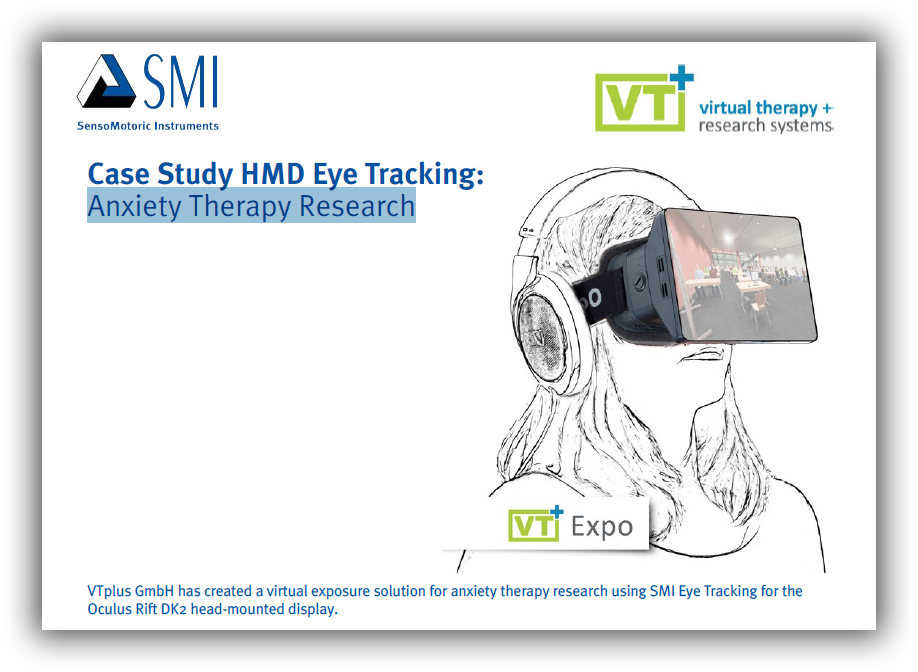Eyetracking mit SMI HMD Integration für Angst- und Therapieforschung mit virtueller Realität
Case Study HMD Eye Tracking: Anxiety Therapy Research
VTplus GmbH has created a virtual exposure solution for anxiety therapy research using SMI Eye Tracking for the Oculus Rift DK2 head-mounted display.

BACKGROUND
Anxiety disorders are among the most common mental disorders. When they become chronic – and they often do – they can cause considerable suffering and significantly impair the lives of those affected.
Exposure therapy (in vivo) is one of the most successful methods of helping people cope with such anxiety disorders. But replicating the real situation (in vivo) is often either not feasible (e.g. for post-traumatic stress disorder) or very complex (e.g. air travel scenarios). Virtual reality (VR) is one way of overcoming such hurdles. A VR headmounted display enables the patient to experience anxiety-provoking situations which the therapist can control and easily interchange in the comfort and safety of a therapy room.
CHALLENGE
For exposure therapy to succeed, it is not only crucial that the patients confront the anxietyprovoking elements of the situation. The therapist also needs to remain informed about the patient’s field of view.
SOLUTION
Using SMI Eye Tracking in the Oculus Rift DK2 head-mounted display as part of the VTplus VR exposure system, the gaze direction and the visual attention of the patient are known at all times. The VTplus VR software evaluates which elements are observed and when they are looked at.
BENEFIT
Based on this eye tracking data, the therapist is well-placed to tune the VR exposure exercises individually to each patient and offer more specific instructions. Furthermore, the therapist is also better informed to judge the success of the confrontation exercises.
SMI EYE TRACKING
VR simulations offer a controlled, yet ecologically-valid research method.
SMI’s unique eye tracking integration in the Oculus Rift DK2 – proven for practical usage in everyday situations – offers real-time information on the visual orientation of the patient, thus advancing therapy process research and optimizing the confrontation exercises.
“SMI’s unique HMD eye tracking integration is crucial for our VR
Mathias Müller, Managing Director, VTplus GmbH
exposure solution. Live gaze traces enable us to control if the
patient really confronts stressful elements, and to optimize the
exposure exercise based on this information.”
Case Study: SMI Eyetracking zum Einsatz für Angst- und Therapieforschung mit VTplus CyberSession (PDF)
